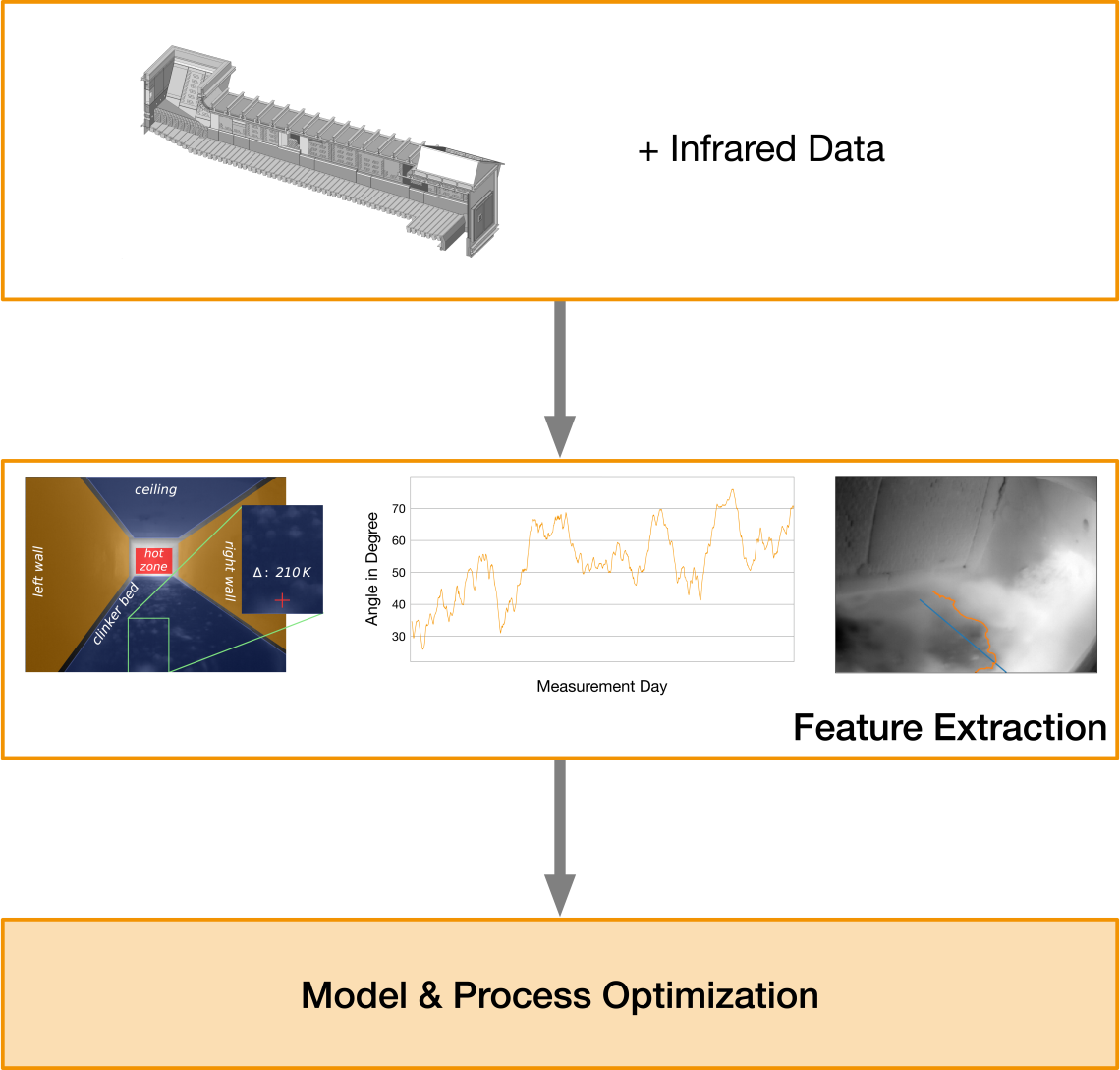OPTIMER project
Optimization of energy efficiency in zinc recycling and cement clinker cooling based on innovative measuring methods and control concepts
Funding: Bundesministerium für Wirtschaft und Energie (BMWi)
Duration: 2017 to 2020
Project consortium: Karlsruhe Institute of Technology (KIT), ci-tec GmbH, OPTERRA Wössingen, Befesa Zinc Freiberg
Work under the OPTIMER joint project is aimed at reducing energy consumption in the zinc and cement processing sectors by the use of innovative measurement methods. These methods based on new camera technologies (infrared range 10.6 ± 0.1 µm) are used to calculate characteristics of the zinc recycling and cement clinker cooling processes. Then, new theoretical models are derived. In addition, an innovative control concept is developed to enhance energy efficiency. As will be demonstrated in practice, sustainable reduction of energy consumption will be achieved.
In the zinc processing sector, natural gas, the reducing agent (charcoal), and electric power are consumed. Potential reduction of natural gas consumption by about 10% corresponds to about 550 MWh/a per furnace. Potential charcoal reduction by about 5% corresponds to about 700 t/a per furnace or about 5600 MWh/a per furnace. Electricity consumption can be reduced directly by decreasing startup and shutdown processes. An exact figure, however, is difficult to estimate.
In the cement processing sector, homogeneous and permanent increase in the temperature of secondary and tertiary air will reduce energy consumption. Temperature increase amounts to about 50 K. In combination with an annual production of 600,000 t clinker, fuel energy consumption can be reduced by about 60,000 GJ (16.67 GWh) annually. Germany-wide, cumulated reduction would thus amount to 567 GWh of fuel energy (approximately 94,000 t/a lignite). Further reduction potentials result from avoiding critical process states, such as snowman and red river.


